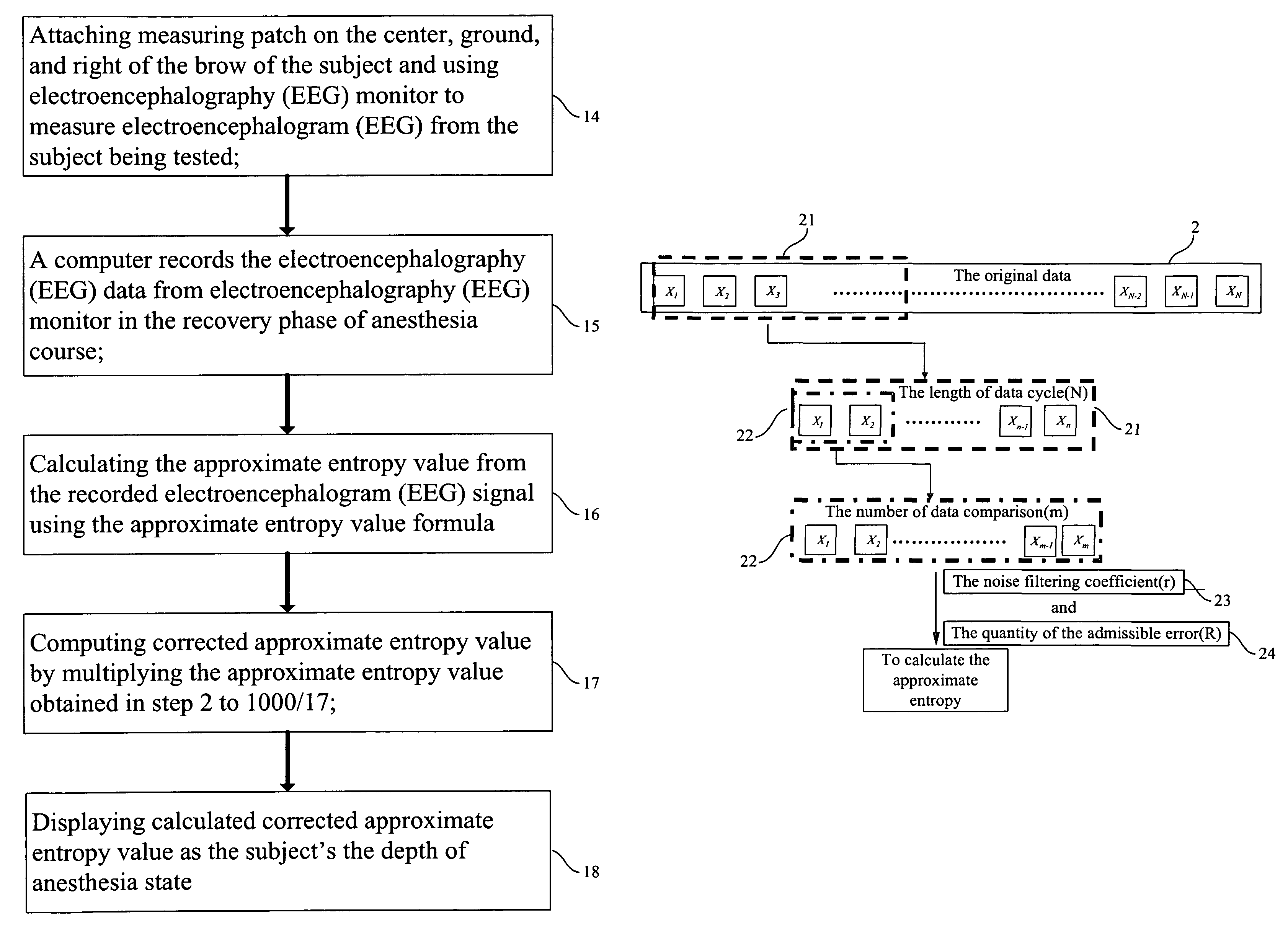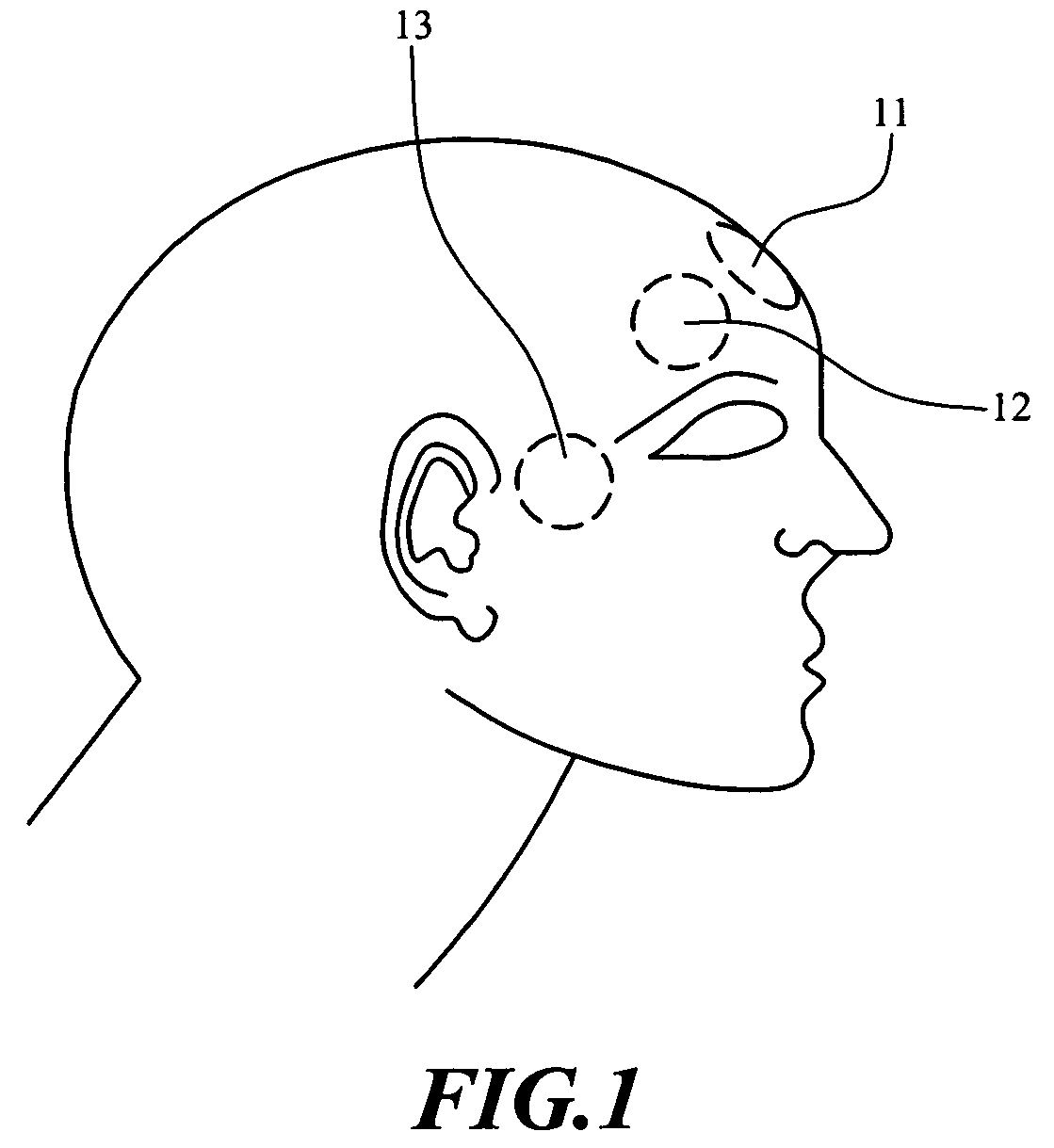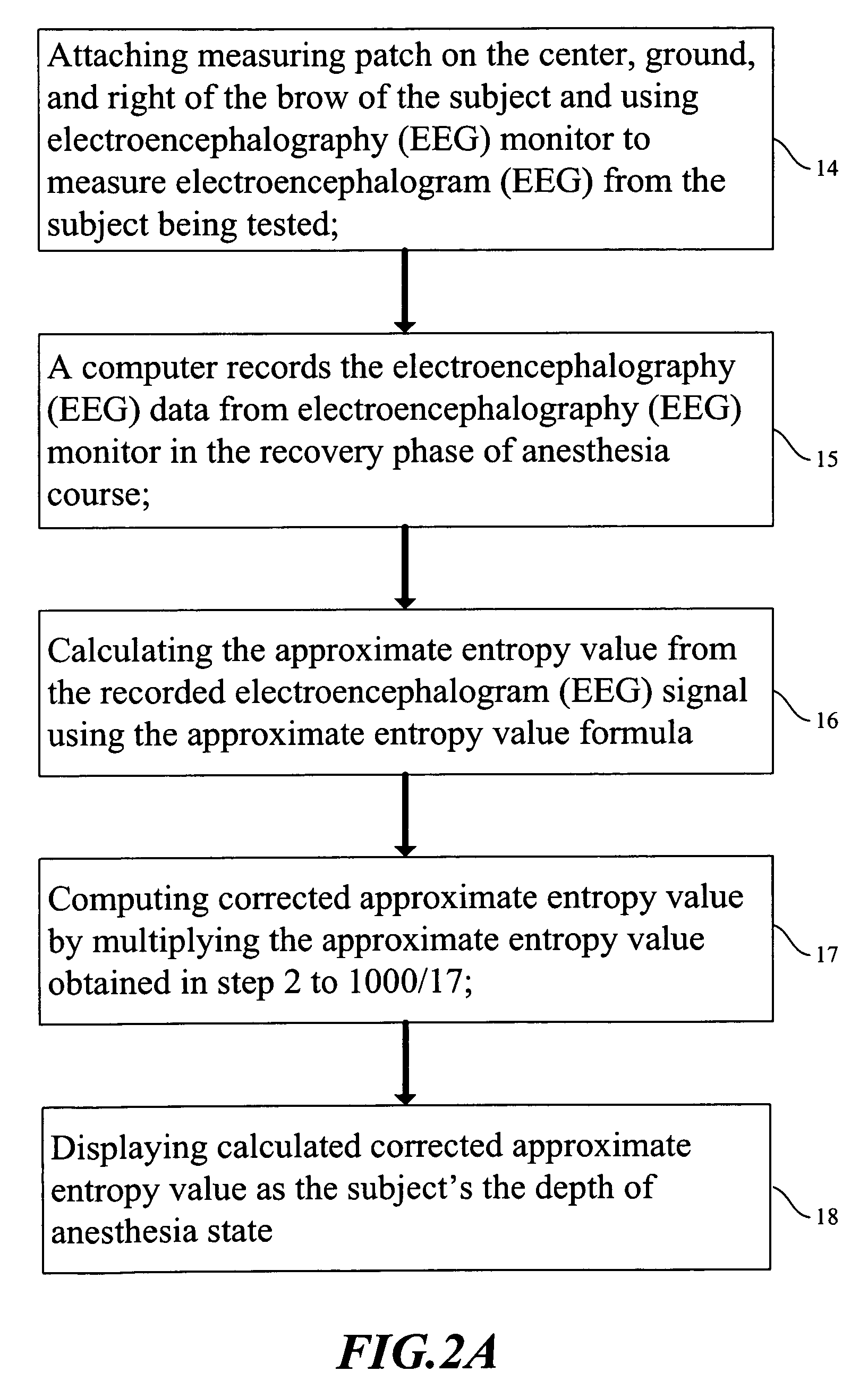Method for monitoring the depth of anesthesia
a technology of anesthesia and depth, applied in the field of monitoring the depth of anesthesia, can solve the problems of affecting the patient, reducing so as to achieve the effect of improving the accuracy of anesthesia
- Summary
- Abstract
- Description
- Claims
- Application Information
AI Technical Summary
Benefits of technology
Problems solved by technology
Method used
Image
Examples
example 1
The Collection of Clinical Data
1. The Investigated Subject
[0042]The investigated subjects of this example were patients to be subjected to an operation of nasosinusitis in National Taiwan University Hospital. Twenty-five patients were enrolled. Thirteen of them are male, and the other twelve are female. They are in an average age of 42±13 years, and the average operation time is 110±45 minutes. The patient being tested was made first into anesthesia by intravenous injecting with thiopental. Then, the anesthesia manner was changed into general gas anesthesia (general anesthesia using inhalant anesthetics), which the main inhalant anesthetics were isoflurane, sevoflurane, and desflurane.
2. Measuring Instruments and Data Collection
[0043]Referring to FIG. 2A number 14, a method for predicting the depth of anesthesia, comprising step 1: attaching measuring patch on the center, ground, and right of the brow of the subject and using electroencephalography (EEG) monitor to measure obtaining...
example 2
Analysis of Brain Wave Signals with Approximate Entropy
[0054]Referring to FIG. 2A number 16, a method for predicting the depth of anesthesia, comprising step 3: using a computer to calculate the approximate entropy value from the recorded electroencephalogram (EEG) signal using the formula
Approximat Entropy=Φm(r)−Φm+1(r);[0055]wherein
[0056]Φm(r)=(N-m+1)-1·∑i=1N-m+1lnCim(r);[0057]Cim(r)=(number of x(j) such that d[x(i),x(j)]≦r) / (N−m+1);[0058]x(i)=[u(i), . . . , u(i=m−1)];[0059]x(j)=[u(j), . . . , u(j=m−1)];[0060]u(i),u(2) . . . u(N) are time sequence data;[0061]wherein N is the length of data cycle;[0062]m is the number of data comparison;[0063]r is a noise filtering coefficient;
[0064]In this example, the brain wave signal of the subject was analyzed with approximate entropy, and the result of which was used to predict further the depth of anesthesia of the subject. Low approximate entropy value indicated the anesthesia state of the subject, where the brain wave signal had a reg...
example 3
Results
[0087]FIG. 3-1 to 3-25 shows analytical value of BIS Index, SEF95, MEF, and approximate entropy obtained during the anesthesia period of the subject tested. Next, the anesthesia course was divided into three phases, i.e., induction, maintenance and recovery, and thereafter, the depth of anesthesia of the subject in each phase was analyzed using BIS Index, SEF95, MEF, and approximate entropy. Results were shown in Table 1, 2 and 3.
[0088]
TABLE 1The depth of anesthesia of the subject in induction phase of anesthesiausing BIS Index, SEF95, MEF and approximate entropyBIS IndexSEF95MEFApEnPatientmeanSDmeanSDmeanSDmeanSD 173.927.674.56.156.21861.835.9 276.718.959.620.128.817.369.216.7 376.718.959.620.128.817.369.216.7 479.226.172.322.925.722.373.628.9 579.221.662.120.723.112.984.119.5 679.221.662.120.739.526.471.117.1 780.617.670.316.329.424.680.616.3 885.815.560.427.123.415.373.713.6 984.318.664.519.525.517.679.118.31067.719.856.31820.318.276.814.91182.921.754.744.224.321.475.421.8...
PUM
 Login to View More
Login to View More Abstract
Description
Claims
Application Information
 Login to View More
Login to View More - R&D
- Intellectual Property
- Life Sciences
- Materials
- Tech Scout
- Unparalleled Data Quality
- Higher Quality Content
- 60% Fewer Hallucinations
Browse by: Latest US Patents, China's latest patents, Technical Efficacy Thesaurus, Application Domain, Technology Topic, Popular Technical Reports.
© 2025 PatSnap. All rights reserved.Legal|Privacy policy|Modern Slavery Act Transparency Statement|Sitemap|About US| Contact US: help@patsnap.com



